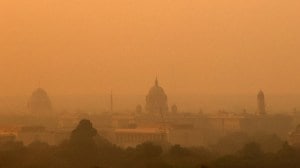Fearing terrorists,US puts lid on flu experiments
US government also asked scientific journals to hide certain details from reports on experiments.
US government for the first time is moving to put a lid on publication of details of some bio-medical experiments on the deadly flu for fear that the information could be used by terrorists to create deadly viruses and touch off epidemics.
The American government advisory board took the extra-ordinary step after scientists,experimenting in the US and Netherlands,created a highly transmissible form of deadly flu virus that does not normally spread from person to person.
The experiments,the New York Times reported,where done in ferrets,which are considered a good model for predicting what flu viruses will do in people.
The virus A(H5N1) causes bird flu which rarely infects people but has an extra-ordinarily high death rates when it does. Since the virus was first detected in 1997,about 600 people have contracted it and more than half have died.
Most of the case,the paper said,had been in Asia and scientists have monitored the virus,worrying that if it developed the ability to spread easily from person to person it could create one of the deadliest pandemics ever.
The NYT said that the government panel had asked the two journals ‘Science’ and ‘Nature’ to keep certain details out of reports that they intended to publish. “Experimental details and mutation data that would enable replications of the experiments” should not be published,the panel has directed.
Ever since,the tightening of security after the 9/11 terror attacks,scientists have worried that the scientific development would pit the need for safety against the need to share information.
Now it seems that day has come,the NYT quoted US officials as saying.
The studies of the virus at the Erasmus Medical Centre in the Rotterdam,Netherlands and the University of Wisconsin in Madison were paid for by the US National Institute of Health and the idea behind research was to try to find out what genetic changes might make the virus easier to transmit.
Defending the decision to ban publication of the details of the experiments,the NYT quoted David R Franz,a biologist with the army biological lab at Fort Detrick at Madison,who said “it’s a wake up call.”



- 01
- 02
- 03
- 04
- 05




























